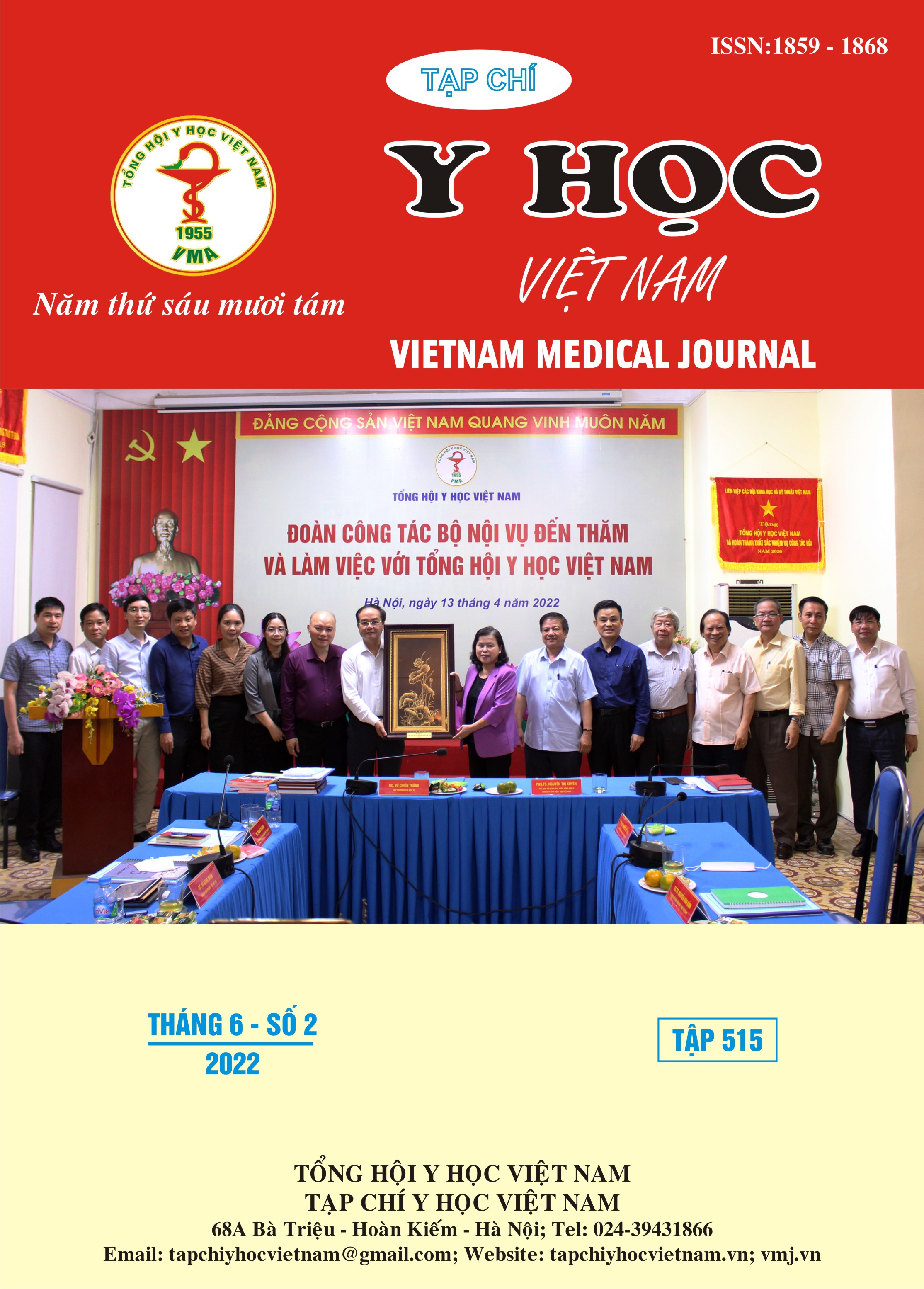THE CHARACTERISTICS OF ALCOHOLIC PSYCHOTIC PATIENTS WITH PARANOIA AND HALLUCINATIONS UNDERGOING INPATIENT TREATMENT AT NAM DINH PSYCHIATRIC HOSPITAL IN 2020
Main Article Content
Abstract
Objectives: Some characteristics of patients with alcoholic psychosis with paranoia and hallucination undergoing inpatient treatment at Nam Dinh Psychiatric Hospital 2020. Subjects, research methods: cross-sectional description 75 patients diagnosed with alcoholic psychosis, paranoid predominance, hallucinogens are inpatient treatment at Nam Dinh Psychiatric Hospital from April 2020 to October 2020. Result: The age group accounted for the largest proportion from 30 to < 40 years old (52%). Most of the patients live in rural areas (90.7%) and work in agriculture (49.3%). Duration of drinking from 10 - ≥ 15 years’ accounts for the highest rate (44%). The average amount of alcohol consumed 500 - <1000ml/day accounted for 85.3%. The majority are married, however the rate of unmarried and divorced is relatively high (20%); The main caregiver is the wife, children and family members. The level of education of the subjects was low, mainly junior high school (69.33%), the rest were upper secondary school and primary school. 80% of patients are admitted to the hospital with untidy clothes, less pink skin and mucous membranes or scratches. Patients admitted to the hospital in a state of behavior disorder: disorderly walking, agitation (94.7%); 100% of patients have emotional disorders; reduced memory (80%), most lost orientation in time and space (93.7). Conclusion: The age group with the highest percentage is the working age. Most of the patients live in rural areas, have low education level (mainly primary school). The highest percentage of patients using alcohol is 10-15 years; The maximum amount of alcohol to drink is 500-1000ml. Most patients are admitted to the hospital with emotional and behavioral disturbances.
Article Details
Keywords
Psychosis due to alcohol, paranoia, hallucination
References
2. Nguyễn Thanh Bình (2010), “Dịch tễ học nghiện
rượu”, “Nghiện rượu, Nhà xuất bản y học, Hà Nội. Tr.17-20.
3. Nguyễn Hữu Cát (2007), Nghiên cứu đặc điểm lâm sàng của người bệnh điều trị nội trú bị Rối loạn tâm thần do rượu, Luận văn chuyên khoa II.
4. Nguyễn Mạnh Hùng, (2009), Nghiên cứu đặc điểm lâm sàng và biến đổi một số chỉ số lâm sàng ở người bệnh sảng rượu, Luận án tiến sỹ, Học viện Quân y.
5. Quách Văn Ngư¬ (1998),“Nhận xét đặc điểm lâm sàng và kết quả điều trị của sảng rượu tại Bệnh viện bảo vệ sức khỏe tâm thần”.
6. Tống Thị Luyến, Trần Như Minh Hằng, (2014), Nghiên cứu đặc điểm lâm sàng và các yếu tố liên quan đến người bệnh Loạn thần do rượu với hoang tưởng, ảo giác chiếm ưu thế
7. Nguyễn Thị Thu Lan , (2014) Nghiên cứu đặc điểm lâm sàng và kết quả điều trị ở người bệnh có hội chứng cai rượu tại Bệnh viện quân y. Tr 120


